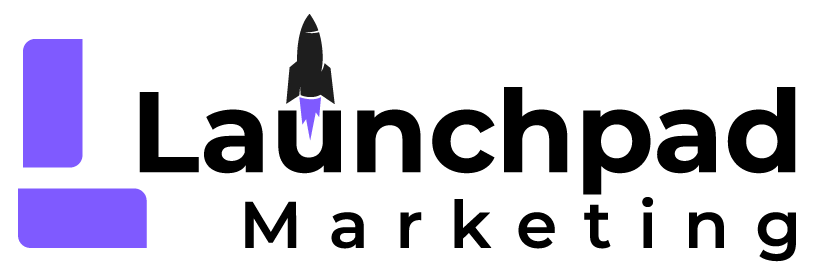Running a PPC campaign without data is like throwing darts in the dark. You’re spending. You’re hoping. But you’re not controlling. That’s where PPC campaign optimization comes in, not as an idea, but as a necessity. For marketers who care about performance, it’s not about launching ads. It’s about managing them like a living, breathing system.
This guide breaks down 10 data-driven tactics that help you not just run ads, but run them better. Every tactic here is simple, practical, and meant to answer one big question: how to optimize PPC campaigns efficiently.
1. Start with conversion data, not click volume
Clicks feel good. But clicks don’t pay your bills, conversions do. Install conversion tracking right from the start. Whether it’s purchases, sign-ups, or calls, tracking what matters is non-negotiable.
| Fact: A Google study showed that advertisers who track conversions grow 50% faster than those who don’t. |
Set it up, or you’re just guessing.
2. Use SKAGs to get hyper-relevant
One keyword. One ad group. One landing page.
That’s the SKAG (Single Keyword Ad Group) approach, and it works. It lets you tailor every step of the journey, improve Quality Score, and lower your cost per click. Broad ad groups are sloppy. SKAGs are sharp.
When ads match the exact query, people click more. And when they land on a page that matches the ad, they buy more.
3. Define your CPA and ROAS targets early
You can’t optimize what you don’t measure. Every campaign needs two numbers up front:
- Target CPA (cost per acquisition)
- Target ROAS (return on ad spend)
Google lets you automate based on both, but only if you set the rules. If your goal is $25 CPA and 5x ROAS, plug that in. If not, you’re just letting the algorithm run wild.
4. Kill off underperforming keywords
Here’s a hard truth: most keywords in your campaign are dead weight. Go into your Search Terms Report weekly. Sort by cost. Find the ones with zero conversions and high spend. Cut them.
| Quick Stats: According to WordStream, the top 12% of keywords generate 80% of conversions. |
If you’re not doing this regularly, you’re funding keywords that never earn their keep.
5. Test your ads like a scientist, not a gambler
A/B testing isn’t optional. It’s the engine of PPC performance. But don’t test randomly. Change one thing at a time: your headline, CTA, or final URL, and give it at least 1,000 impressions per variant before you decide.
A smart test might look like:
- Variant A: “Shop Men’s Boots”
- Variant B: “Shop Leather Boots – 40% Off”
The better one stays. The weaker one goes.
6. Get serious about landing page speed
Your ad doesn’t convert. Your landing page does. That’s where the decision happens. A delay of even 2 seconds can mean a lost sale. Mobile users won’t wait.
| Fact: A report by HubSpot found that the first 5 seconds of page load impact conversion rates the most, and drop-off starts after 3 seconds. |
Use tools like PageSpeed Insights or GTMetrix. Fast pages win.
7. Add negative keywords every week
Negative keywords are your secret weapon. They block irrelevant traffic that drains your budget.
You sell custom suits. But your ad shows up for “Halloween costume rental.” That’s not just wasted spend; it’s bad targeting.
Go through your search queries. Add the junk terms to your negative list. Be ruthless.
8. Review performance by device, age, and gender
Different users behave differently. Some campaigns convert better on mobile. Others perform best with desktop users aged 45+. Data tells you this.
Use your Google Ads segmentation tab. Check:
- Device performance
- Age brackets
- Gender splits
If a segment underperforms, reduce bids or cut it. If a segment overperforms, double down. Let your PPC campaign optimization reflect who your audience really is.
9. Create remarketing funnels, not just ads
Most users won’t buy on the first visit. That’s not a problem; if you plan for it.
Build smart remarketing lists:
- Visitors who viewed product pages
- Users who added to the cart
- Buyers who haven’t returned in 30 days
Then build different ads for each segment. Don’t treat them all the same. A person who bounced in 5 seconds is not the same as someone who left at checkout.
10. Review your account weekly, not when it breaks
Set time every Friday. No excuses. Open the dashboard. Check your budgets, alerts, search terms, and conversion costs.
Look at:
- Campaigns that are overspending
- Ads that aren’t delivering
- Keywords that lost impressions
Don’t wait until you lose $500. Fix it when it’s $50. That’s how the pros handle PPC campaign optimization.
What’s the Real Difference Between PPC That Works and PPC That Wastes?
One thing: control. The more data you have, the more control you earn. These 10 tactics aren’t theory; they’re what performance marketers use every week to clean up results and scale spend.
If you’ve been asking how to optimize PPC campaigns without burning your budget, start here. And if you’re ready to hand it over to people who live and breathe paid search…
Work With People Who Know PPC Down to the Decimal
LaunchPad Marketing runs PPC with the sharpest tools in the kit. Google Ads. Meta. YouTube. LinkedIn. Wherever you spend, we make sure it earns.
Want someone to audit your current ads? Scale ROAS? Cut waste?
Book a consult with LaunchPad Marketing for PPC campaign management Services designed to give your business a new hype.
You focus on the product. We’ll focus on the performance.


